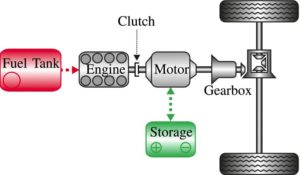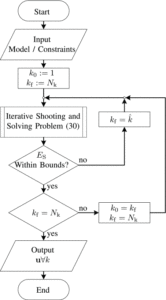Hybrid electric vehicles (HEVs) depend on an onboard energy management system (EMS) to strike the right balance between the internal combustion engine and electric motor that leads to lower fuel consumption and CO2 emissions. A new algorithm developed by a team at the Technical University of Dresden could calculate optimal energy use up to one hundred thousand times faster than systems in use today. Researchers say this method could increase fuel efficiency by as much as 50 percent.
EMS must be able to shift power between the internal combustion engine and electric motor with acute accuracy. This shift is determined by algorithms that take into account multiple vehicle states and environments, such as pedal positions and times when the car is idling.
“Today’s cars come with an adaptive cruise control system to maintain a speed set by the driver or follow a vehicle ahead if it drives slower than the set speed,” said study author Stephan Uebel. “Our study addresses an extension of these systems where the velocity is varied while keeping the same travel time in order to save fuel for hybrid electric vehicles.”

Figure 1: Structure of a HEV
The new algorithm combines discrete state-space Dynamic Programming (DP) – one of the most common EMS control methods – and Pontryagin's Maximum Principle (PMP) to solve for the optimal control of velocity, battery energy, engine state, and gear of a HEV at a calculation rate one hundred thousand times faster than the benchmark method. The combination of DP and PMP overcomes DP’s ‘curse of dimensionality’, where computational effort increases exponentially with the number of state variables. PMP simplifies the problem of computational overload by considering battery energy limits, the gear, and internal combustion engine on/off as control signals rather than state variables.
“PMP is proven to be ideal for certain kinds of optimal control problems,” Uebel explained. “By adapting the optimal control problem solved with DP, our approach reduces the calculation time of the optimal control problem with similar solution quality.”

Figure 2: Algorithm of PMP-DP approach
Initial simulations show a fuel-efficiency benefit of 8-50 percent, depending on road altitude and engine efficiency. As a next step, the researchers are looking to embed the algorithm in a model predictive control environment, which will allow it to be used in real driving tests. Future research will focus on decreasing the computational effort of the algorithm and improving the drivability. While there is still research to do, this novel approach is unmatched in its reduction of the calculation time of the optimal control problem in hybrid vehicle EMS.
For more information on hybrid vehicles, visit the IEEE Xplore Digital Library.





